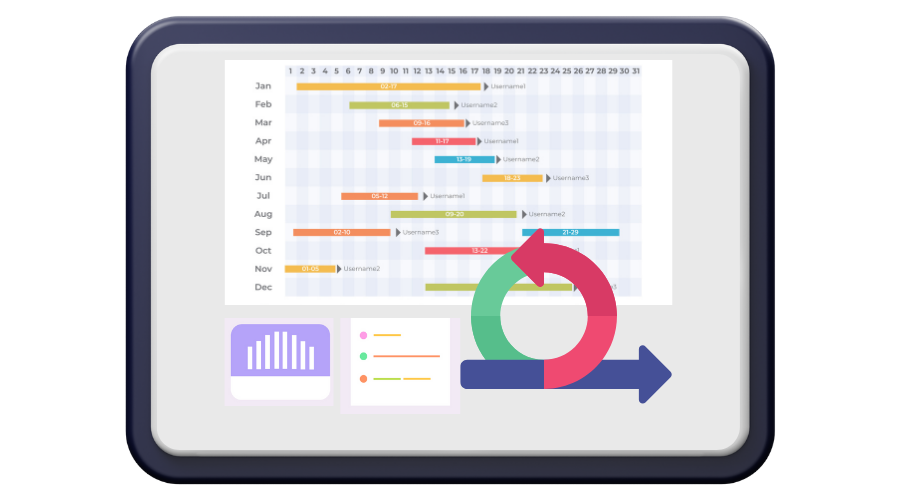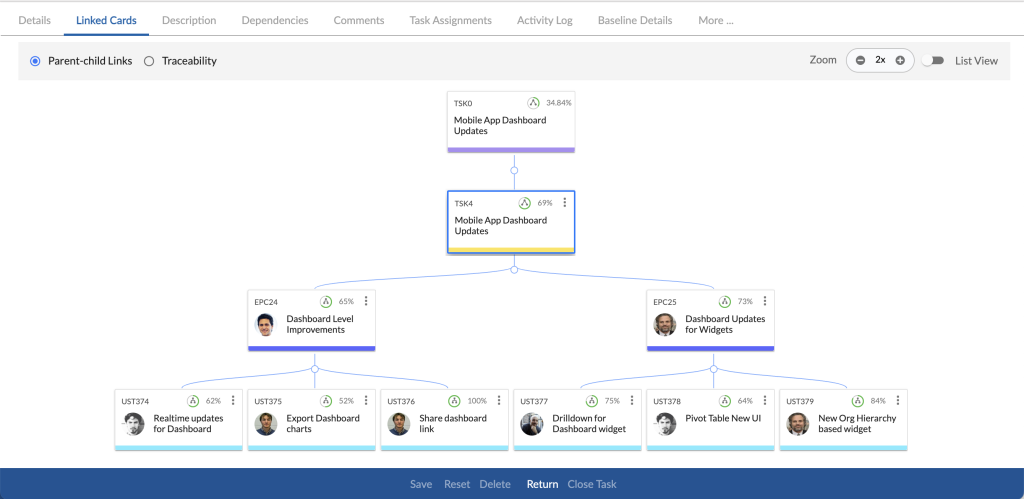Hybrid agile is a flexible approach that works in many situations and is best when there are elements of both iterative and predictive projects involved. But when is it the right time to start using a different project management approach? And how do you get started?
In this article, we’ll start with a quick recap of what we mean when we talk about hybrid agile, and then share some tips on what we’ve learned about when it works and how to use it.
What do we mean by Hybrid Agile?
In project management, hybrid means a blend of two or more ways of working. That could be two agile methods, like a Scrumban approach, or a combination of predictive and iterative approaches on the same project. In fact, in PMI’s Future of Work report, they described three different definitions for hybrid project management, varying in ‘agile-ness’ from simply adopting a few agile practices and techniques (like retros) through to building and testing in sprints.

However, one thing we discovered at the PMI Summit last year is that when we asked booth visitors whether they were doing Hybrid Agile or Traditional or Agile, some of the people who responded with “Hybrid Agile” meant that they had a mix of projects in their organization, some fully traditional, some fully agile.
The definition of Hybrid Agile we use most frequently here at Nimble is a portfolio or program-level definition which is about the project mix rather than individual projects. Whichever definition you subscribe to for your organization, you still have a fundamental choice to make: when do you use hybrid agile?
When to use Hybrid Agile?
As with so many things in project management (and management in general) there is no single answer to the question of when to use the hybrid agile model as your delivery approach. Each organization will have different needs.
If you’ve decided that hybrid agile is right for your team, it’s time to take your planning to the next level. Generally, we recommend thinking about the level of management to which you want to apply a hybrid approach. For example:
For projects: When projects have aspects that are best suited to iterative and predictive ways of working. A hybrid approach example would be a tech project with software and hardware deliverables, a new product launch with tech and process change management requirements, or a project with aggressive timescales. All of these could benefit from iterative delivery alongside some elements that are more commonly associated with predictive project governance.
For programs: Where some projects use agile approaches and some are being managed in a waterfall or predictive way. For example, a transformation program might have technology projects that are being delivered by Scrum teams and an HR restructuring element that is managed in a more linear fashion.
For portfolios: Again, where the portfolio has a mix of projects and programs using different approaches. The right project management software can show you progress and dashboards to understand the entirety of the portfolio, whatever delivery approach is used.
There’s another consideration too: the hybrid approach is particularly useful when balancing the different and conflicting expectations of the stakeholders and sponsors. These senior leaders are paying for the project and need predictability of when it will get done and how much it will cost but the business user or customer (the beneficiary of the project) wants to ensure they get what they need, even if it means making changes to requirements and product redesign during the project.
How to use Hybrid Agile?
Let’s say you’ve decided, like many of our customers, to embrace a variety of ways of working to empower the team to lead the work in the way that best suits their needs. What does this actually look like in practice?
Think about the reasons for choosing a hybrid, blended approach to delivering projects. Put the ‘why are we doing this?’ question front and center and let it guide you on your implementation.
What are the typical reasons for using a hybrid agile approach? Here are some scenarios that might feel familiar.
Poor project decision-making and governance. For example, if one of your challenges is governance and decision-making, set some boundaries around what you’d expect to see for stage gates as projects move through the predictive phases of delivery.
Inconsistent reporting. If your want to ensure better, consistent reporting, choose a tool like Nimble Hybrid that allows you to report comprehensively on projects across the portfolio, regardless of how they are run.
Teams getting distracted and tasks not finishing on time. If the main challenge facing teams is collaboration and managing the tasks, it’s important to make sure your chosen ways of working are underpinned by tools that make it easy to keep the team on track. For example, choose a work management solution that is flexible and appropriate for teams leading both agile and predictive or linear projects… and that’s not a spreadsheet!
The good news is that as project delivery methods sit on a spectrum of agility you can be very flexible in how you adopt and adapt methods for use. Empower the team to choose the right tools and techniques that will lead them to a successful project completion. Here are some tips for doing that.
Define ways of working and how the project will be delivered to ensure consistent expectations.
Involve stakeholders early and often. Talk to them, and customers, about what approach will be used for what project/feature/workstream. Make sure they understand the vocabulary being used, especially if they don’t have experience in project delivery or agile methods.
Be flexible. Adapt and iterate. Don’t be afraid to change what you’re doing to get better results. Use retrospectives and lessons learned with the team to understand what is working and then make appropriate changes so your methods evolve to be fit for purpose.
The agile hybrid method has advantages for project success and management when applied to the right projects. Only you will know what projects are the right ones but we’ve found that it’s actually quite hard to get that wrong! If you are using the right tools and techniques that support the team to work collaboratively, have oversight over the work and share the right information with stakeholders at the right time, then you’re doing it right.
Tailor how projects are led, manage expectations at all levels and let teams choose the best approach for each project. And don’t be afraid to talk to customers and stakeholders about how and why you are making delivery decisions, so they can come along the hybrid journey with you.
Nimble Hybrid Agile empowers teams to seamlessly implement Hybrid Agile projects by combining the flexibility of Agile methodologies with the structured approach of traditional project management, ensuring adaptability and efficiency throughout the project lifecycle. Signup for a Free trial.







